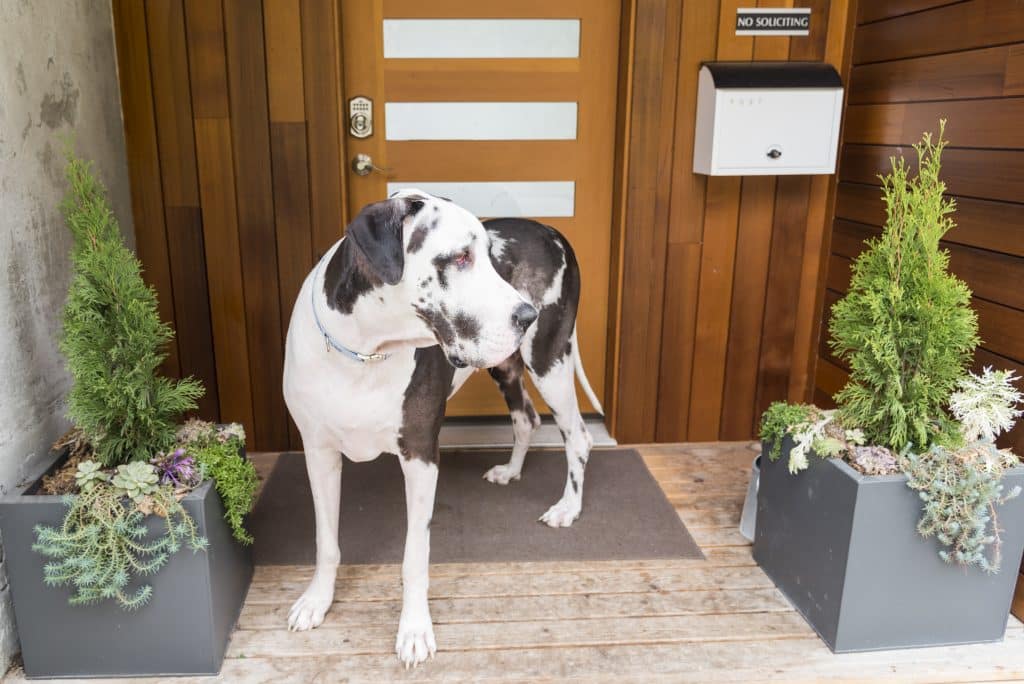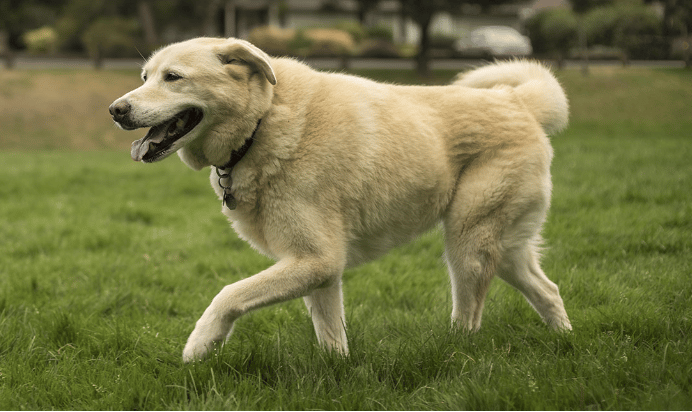Dogs are often seen as a symbol of relaxation and stress relief. However, just like humans, dogs can experience stress in their lives. And while it may not be as obvious as it is with someone in human form, there are some things to look out for that can tell you whether or not your dog is dealing with issues in their life, leaving them feeling uneasy. And by the end of this article, you’ll know several different signs of stress in a dog. That way, you can better recognize them in your own furry friend!
Contents
The Damage Stress Can Do To A Dog

Simply put, stress can be extremely harmful to a dog’s well-being. Constant, unchecked stress has been linked to a bevy of medical issues. These issues range from digestive and circulatory problems to changes in behavior, such as heightened aggression or irritability. Additionally, prolonged and excessive stress has been known to weaken a dog’s immune system, which can leave them vulnerable to common illnesses and even more serious afflictions.
In extreme cases, stress can even lead to heart disease and dementia. And while the symptoms of these issues may not be evident at first, if your dog is dealing with constant and uncontrolled stress, it’s important to keep an eye out for potential warning signs that they are suffering from something more serious.
Signs Of Stress In A Dog
As scary as the previous section may seem, there are some signs that you can watch out for when it comes to stress in dogs. These signs will vary depending on the individual dog and as well as the cause of the stress. So it’s important to keep an eye out for a combination of these behaviors:
Pacing

Pacing in a dog can be seen as more than just a sign of boredom or restlessness. It can also be an indication of underlying stress, especially if the pacing is happening on a daily basis. Constant fidgeting and constantly wandering from area to area is a telltale signs of anxiety in a pup – they just don’t know how else to manage all the excess energy they have. Even though some dogs appear to happily wander around your house, if it becomes an everyday habit, it might mean that something deeper is bothering them.
Shaking

Along with pacing, a common sign of stress in a dog is shaking or trembling. Again, this can sometimes just be seen as an innocent bodily reflex, but it can also indicate something more serious – especially if the shaking is accompanied by breathing difficulties and extreme agitation. Typically when a dog is shaking due to stress, they will be doing so in the presence of what’s causing them to feel stressed. So if you notice your dog trembling in response to something specific, such as loud noises or a stranger entering their space, it’s likely due to their stress level at that moment.
Hiding

Sometimes a dog will try to escape their stress by hiding in another room or corner. This is especially common for dogs that are scared of strangers, loud noises, or other situations that create anxiety. They may just be looking for some peace and quiet away from the cause of their stress, but if they’re continuously retreating to this same space several times a day, it could mean that their stress level is at an all-time high.
Flattened Ears

Another way that dogs may manifest stress is by flattening their ears back in an attempt to look smaller. This could be a sign of fear, especially if your dog does this whenever someone new walks into the room. However, it could also be a signal of aggression – so make sure to keep an eye out for any other aggressive behaviors in tandem with ear flattening. But if this action is caused by stress, it may be accompanied by other behaviors, such as pacing or shaking.
Whining

Whining is often seen as nothing more than a nuisance, but it can actually serve as an important indicator of stress in your canine companions. Dogs who are distressed may begin to whine more frequently than usual; this behavior, though sometimes irritating, can be a sign that they need help coping with a stressful situation. It could also be a sign that they are suffering from a condition that is leading to stress, such as an illness or neurological disorder.
Sweaty Paws

While some dogs naturally possess wet paws, this can be a sign of stress in other dogs. If your dog’s paw pads start to sweat more than usual, they may feel anxious about something. This can happen for a variety of different reasons, but one of the major reasons is simply the presence of large amounts of stress hormones in your dog’s body. So if you notice that your dog has developed sweaty paws, it may be a good idea to take them to the vet for a proper diagnosis.
Tucked Tail

Just like flattening the ears, a tucked tail can be seen as an indicator of stress in your dog. They may start to tuck their tails more frequently when they’re feeling anxious or scared – especially if there are people or situations that typically cause them to feel this way. You may even notice this behavior in response to loud noises. If you notice that your dog is constantly tucking their tail, it could be a sign that they are stressed out and need help learning how to cope with the situation at hand.
Excessive Yawning Or Panting

Yawning and panting are two of the most common signs of stress in dogs. A dog that is feeling overwhelmed or anxious may begin to yawn more frequently than usual, and they may also start to pant. This can be a sign that there is something bothering them, and they are trying to use these behaviors to try and calm themselves down. Although it may help them in the short term, if they begin to do this excessively or it is paired with other stress-related behaviors, they may need some extra help dealing with whatever is causing them anxiety.
Tips To Manage Stress In Your Dog

Taking care of your canine companions is a major part of their health and happiness. So if you are noticing any of the signs of stress mentioned above, it may be a good idea to start working on some strategies to help them manage their stress. Some things you can try include:
- Creating a comfortable and safe space for your dog in your home, such as a quiet room or corner where they can retreat when they are feeling anxious or stressed
- Spending extra time with your dog, either through play or affection, to help them feel more relaxed and calm
- Ensuring that they receive regular exercise and stimulation, as these can also be a great way to reduce stress levels
- Working with a professional canine trainer or behaviorist to develop strategies for helping your dog cope with certain situations that may cause them stress or anxiety
- Researching the causes of your dog’s stress and trying to address them in a proactive, responsible manner that considers their well-being.
Using these methods and others, you can help your dog feel calmer and more comfortable in their environment, even when they are experiencing stress.
Be Aware Of The Signs Of Stress In A Dog
By understanding the different signs of stress in a dog, you can work to better manage their stress levels and help them feel happier and more comfortable. Whether you notice that your dog is panting excessively or has started to tuck their tail, there are steps you can take to help reduce their stress levels and support their well-being. However, suppose the above at-home remedies don’t seem to be having the desired effect. In that case, it may also be helpful to consult with a veterinarian or canine behaviorist for further advice and support.


